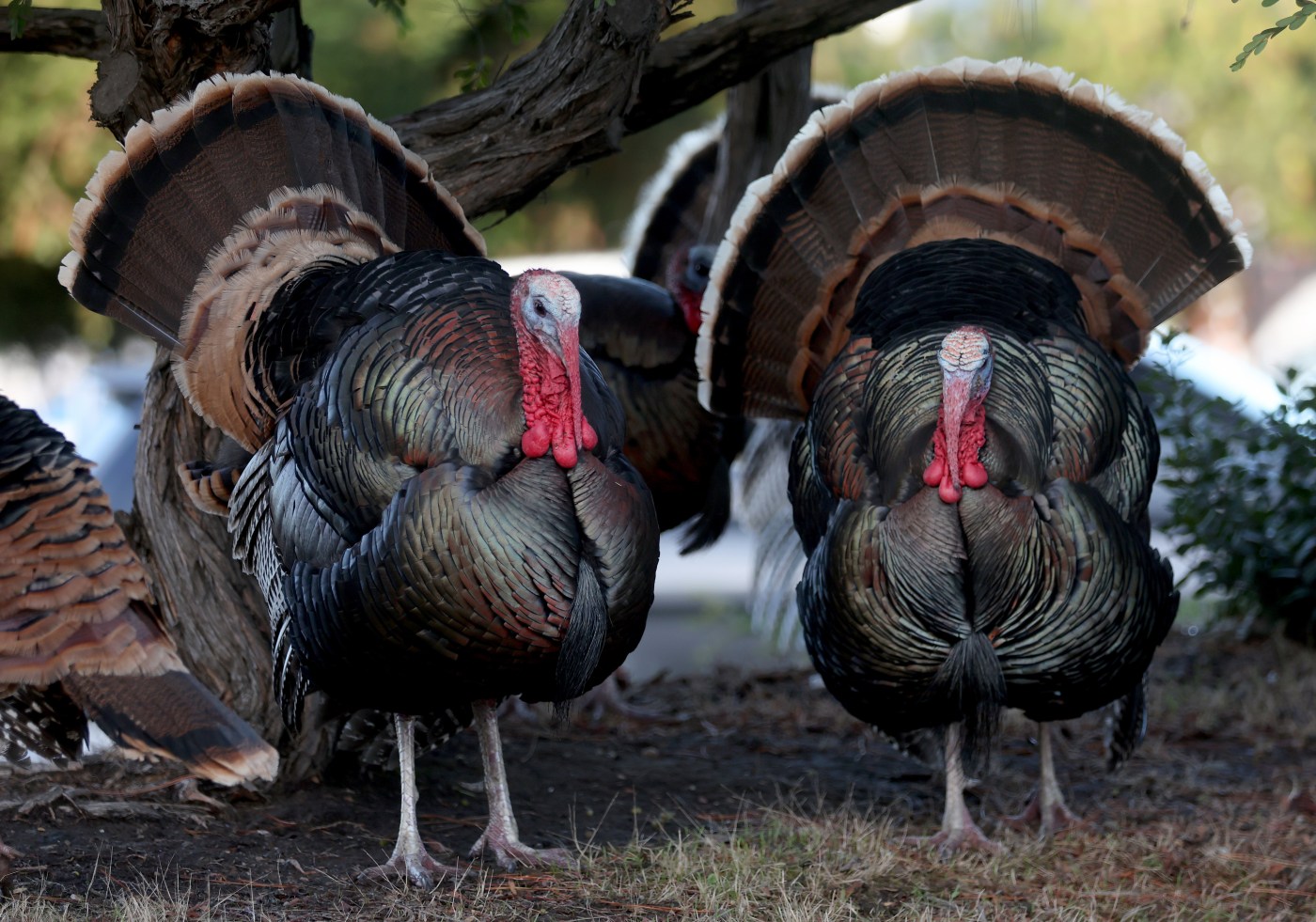
In California, Thanksgiving is not the only time of year when turkeys invade the suburbs.
Related Articles
Coyote season is on. Here’s how to stay safe
Shark prompts closure at Seacliff State Beach
A woman’s house in Northern California was burglarized so many times that even bears went in
Ducks thrive in Sunnyvale pool; their welcome is wearing thin
Fish restoration in Alameda Creek nears completion
Some Bay Area residents often see the plump fowl roaming neighborhood streets or outside of homes, especially in the East Bay. But why are wild turkeys appearing in our growing urban landscape?
If they seem a bit out of place, it’s because they are.
According to experts, turkeys are not native to California. The closest example was a species called Meleagris Californica that lived in Southern California and went extinct around 10,000 years ago, though it was originally thought to resemble a peacock more than a turkey.
In the 1900s, the California Department of Fish and Wildlife introduced turkeys from the southwest throughout the state to encourage recreational hunting. The licenses required for such hunting were meant to generate revenue for the state.
After stopping traffic briefly along Fernside Boulevard in Alameda, Calif, a turkey heads between parked cars to the sidewalk with his full foliage on display. (Laura A. Oda/ Bay ARea News Group)
Today, there are around 250,000 wild turkeys throughout California. They can be found in 49 states across the country – the only state without wild turkeys is Alaska.
“They are a species that can adapt for really anywhere,” said Sebastian Garcia, the California regional director for the National Wild Turkey Foundation.
Several factors may influence the movement and presence of wild turkeys in urban and suburban areas.
For one, when female turkeys nest, they often search for places that are easily concealed by bushes or other vegetation, according to a University of Minnesota study. This may attract them to urban parks or leafy neighborhoods with ample undergrowth.
Additionally, the turkey diet ranges widely, including insects, seeds, fruits, and even mice. Wild turkeys in human-populated settings were documented using available resources for food, such as bird feeders, food plots, acorns, or fruit trees.
Wild turkeys sit on a branch, eating toyon berries from the bush at Berkeley Marina in Berkeley in 2024. (Ray Chavez/Bay Area News Group)
The study also found that despite female turkeys’ need for natural spaces, many turkeys actually rely on human-populated, developed areas during the autumn and winter.
Another key factor that draws wild turkeys to urban settings is a sense of safety.
“If they have less bobcats or mountain lions or coyotes – other predators – chasing them, they notice they’re a little bit safer in these neighborhoods,” Garcia said.
Bay Area residents may tend to see more turkeys out and about during the spring. Their breeding season typically lasts from late March through the end of May, according to Garcia. During this time, male turkeys look for mates and female turkeys seek out nests.
Although wild turkeys are impacted by wildfires in the same way that other forest creatures are, he said there has not been any research to show that wildfires are a factor in driving turkeys into urbanized areas.
If they spot a wild turkey or two on the street or even their front lawn, Garcia recommends that people “enjoy them from a distance.”
Although they do not migrate like some birds, wild turkeys can fly, which is why residents may sometimes spot them roosting high up in trees. If a turkey gets chased or provoked, it may fly toward or even peck at the aggressor.
However, Garcia said they are unlikely to engage with people who are just walking by peacefully.
“They are wild animals,” he said. “They’re prone to unpredictability. But for the most part, I don’t believe they cause harm to the general public.”
While they may not always be dangerous, wild turkeys may become a nuisance. After all, no one wants turkeys destroying their gardens, scaring away birds, or even chasing their children.
Some ways to keep wild turkeys off of residential property are by regularly mowing the lawn, fencing off fruit-bearing plants, or pruning trees and bushes. Motion-activated sprinklers can also be used to scare turkeys away.